Things you did not know about the financial world
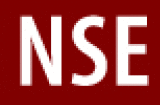
Bombay Stock Exchange (BSE) was the first ever stock exchange in Asia established in 1875. The National Stock Exchange (NSE), on the other hand, was established only in 1992. However, in just over 20 years NSE has grown by leaps and bounds, leaving BSE behind by a considerable distance.
NSE, a demutualised electronic stock exchange, was setup in the post liberalization phase of the Indian economy, to bring about transparency in the Indian equity markets. The exchange, promoted by a number of financial institutions, was registered in 1992 as a company and was recognized as a stock exchange in 1993 under the Securities Contracts (Regulation) Act, 1956. A demutualized stock exchange means that the ownership of the stock exchange is completely separate from the membership (i.e. right to trade) of the stock exchange. The traditional ownership model of stock exchanges in India at that time was ownership by the brokers on the exchange. NSE, on the other hand, allowed any qualified share broker with the minimum financial requirements to trade on the exchange.
The processes institutionalized by NSE revolutionized share markets in India, and brought about much needed transparency in the share market. The biggest beneficiary was the investor, through the implementation of risk management systems, to protect the investor from broker defaults. Today NSE commands 70% market share of the spot market (cash segment) and a virtual monopoly of over 95% market share of the derivatives market (futures and options segment). The geographical reach of NSE is also far wider, about three times that of BSE.
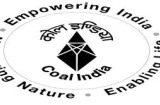
The Coal India Limited (CIL) initial public offering (IPO) is the largest IPO till date in India. It was subscribed more than 15.28 times and collected Rs 2.5 lakh crores in the IPO. Foreign institutional investors (FIIs) accounted for over 50% of the IPO subscription, whereas domestic institutional investors (DIIs), including financial institutions and mutual funds, accounted for nearly 20%. Book running lead managers to the issue were Citigroup Global Markets India Private Limited, Deutsche Equities (India) Private Limited, DSP Merrill Lynch Limited, ENAM Securities Private Limited, Kotak Mahindra Capital Company Limited and Morgan Stanley India Company Private Limited. The price band of the issue was at Rs 225-245 a share.
Before the IPO, CIL was owned 100% by the Government of India. Post the IPO the Government diluted its stake to 90%. CIL, headquartered in Kolkata, is the largest coal producer in India. For FY 2013 – 2014, the revenues of CIL stood at nearly Rs 78,000 crores and profit after tax (PAT) at nearly Rs 15,000 crores. The share price as of close of trade on August 20 is Rs 366.65.
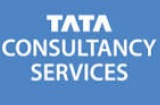
For many years, the honour of the highest market capitalisation in India went to Reliance Industries Limited (RIL), till it was overtaken by the Information Technology giant, Tata Consultancy Services (TCS). Today TCS is the largest company in India, in terms of market capitalisation and by a significant margin. As of close of trading session on Aug 20, the market cap of TCS stood at Rs 4.77 lakh crores. Oil and Natural Gas Corporation (ONGC) ranks second with a market cap Rs 3.62 crores as of close of trade on August 20. RIL has slipped to the third position, with a market cap of Rs 3.22 lakh crores.
TCS was the first Indian company to cross market cap of Rs 5 lakh crores in July. In fact the market cap of TCS is larger than the combined market cap of Infosys, Wipro, HCL and Tech Mahindra.
TCS, a member of the Tata group, was established in 1968 as a division of Tata Sons Limited. TCS Ltd. got incorporated as a separate legal entity on 1995. It operates in nearly 50 countries and has over 3 lakh employees. For FY 2013 – 2014, the revenues of TCS stood at over 83,400 crores, a year on year growth of over 30%. The profit after tax (PAT) for FY 2013 – 2014, was over Rs 19,300 crores, a year on year growth of over 37%. The share price as of close of trading session on August 20 was Rs 2436.2.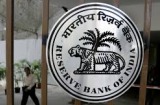
In December 1963, the Unit Trust of India (UTI) was established by an Act of Parliament. In 1964 UTI launched its first mutual fund scheme, the legendary and later, much controversial, Unit Scheme 1964 (US-64). For more than two decades UTI remained the sole vehicle to invest in mutual funds by Indian investors.
UTI functioned under the regulatory and administrative control of the Reserve Bank of India (RBI) till 1977. In 1978 UTI was decoupled from RBI, and the regulatory and administrative control of UTI was taken over Industrial Development Bank of India (IDBI).
In 2001, following the massive stock market crash in wake of the Ketan Parekh scam, mutual fund investors were faced with serious concerns with UTI’s flagship US-64 and the assured returns schemes. Concerns of a run on UTI and the potential impact on equity markets caused the Government to intervene and structure a bail-out package for UTI. The UTI Act of 1963 was repealed and UTI was restructured into 2 separate entities. An entity called the Specified Undertaking of UTI (SUUTI) was created under the direct control of the Government of India, to take over the assets and liabilities of US-64, assured returns and other troubled schemes. The second entity created, was UTI Mutual Fund, promoted by four nationalized institutions, State Bank of India (SBI), Punjab National Bank (PNB), Bank of Baroda (BoB) and Life Insurance Corporation of India (LIC). Before the restructuring, UTI was not governed under SEBI mutual fund regulations, which came into force in 1993 for all non UTI mutual funds. However, post UTI’s restructuring, UTI Mutual Fund was registered with SEBI and now functions under its regulations. Today UTI Mutual Fund has nearly Rs 80,000 crores of Assets under Management.
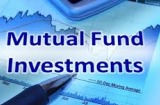
For more than two decades till the mid 80s, UTI remained the sole vehicle to invest in mutual funds by Indian investors. In 1987, the Government allowed non UTI public sector mutual funds setup by public sector banks (like SBI, Canara Bank and Punjab National Bank) and the Life Insurance Corporation of India (LIC) and General Insurance Corporation of India (GIC). Post liberalization, private sector mutual funds were allowed. Kothari Pioneer (now merged with Franklin Templeton) was registered in 1993 and was the first private sector mutual fund in India.
Kothari Pioneer launched two schemes the Kothari Pioneer Prima, an open ended midcap fund and Kothari Pioneer Bluechip, a close ended large cap fund. These were the first private sector mutual fund schemes in India. Now they are know by their more famous names, Franklin India Prima and Franklin India Bluechip funds, and are among the most successful mutual fund schemes in India’s mutual fund history. Franklin Templeton, one of the largest mutual fund companies globally, setup office in India in 1996 as Templeton Asset Management India Pvt. Limited. It acquired Kothari Pioneer in July 2002. Today Franklin Templeton has nearly Rs 54,000 crores of Assets under Management.

Yes, out of India’s estimated current population (in 2014) of 1,270,272,105 (1.27 billion) only 218,34,426 investors (as on March 31, 2014) own a demat account as per following data –
As on March 31, 2014 , CDSL (Central Depository Services (I) Private Limited has 87,77,049 Investors accounts whereas NSDL (National Securities Depository Limited) has 130,57,377 investors accounts. Check facts at www.cdslindia.com and www.nsdl.co.in
Although India has a vibrant capital market which is more than a century old (Bombay Stock Exchange, which is the first stock exchange of Asia, was established in 1875) it has a long way to go as far as penetration of financial services is concerned. A vast majority of the population is still unbanked even though as a country we are becoming younger day by day. More than 50% population of India is under 25 years of age and 65% below the age of 35.
To trade in securities the investor must have a demat account and bank account. And, without having a bank account a demat account can’t be opened.

MRF Ltd. is the most expensive stock trading in India at Rs 20,688.80 (closing price on BSE as on 28th April 2014). The price of one share of MRF is equivalent to buying an iPhone4. While retail investors chase penny stock as they are priced low, the highest priced stock has given a return of over 1,200 per cent in the last five years!
The 52 week high price for MRF is 24,500 (April 07, 2014) and 52 week low is 12,052 (July 8, 2013). In a year the stock price jumped from 13663.70 (closing price of April 29, 2013) to 20,688.80 (closing price of April 28, 2014) thus giving a whopping absolute return of 51.41% to its investors in a year!
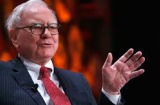
Berkshire Hathaway Inc. (BRK-A) is the most expensive stock in the world. It opened at $ 190,480 and closed at 190,686 at NYSE on 25th April 2014. The price of one share is much more than buying a median priced two bedroom home in Las Vegas or 10 Brand new Honda Civic cars.
A look at Berkshire Hathaway reveals that 66 percent of the company’s shares are held by institutional investors and mutual funds. More than 1,375 institutional investors like Mutual Funds or Hedge funds own the stock as they have more wealth and different timeline for holding the stcok than individual investors.
Omaha based Bekshire Hathaway was founded as two separate Massachusetts cotton mills, Berkshire Fine Spinning Associates and Hathaway Manufacturing Co. merged in 1955. Warren Buffett first bought into the declining concern in the early '60s and eventually ended up in control of it. In 1967 Buffett officially made Berkshire Hathaway a conglomerate, using textile proceeds to purchase National Indemnity, the first of what would be the many insurance companies that provided Berkshire Hathaway’s lifeblood and enabled it to continue acquiring.
Many of the Fortune 500 companies that Berkshire Hathaway has large positions in are – International Business Machines Corp. (IBM), The Coca-Cola Co. and American Express Co.
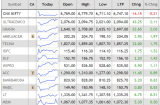
On 15th November 1867, the first stock ticker was unveiled in New York City which ultimately revolutionized the stock markets by making up-to-the-minute prices available to investors around USA. Prior to this, information about stock prices travelled by mail or messenger.
The ticker was invented by Edward Calahan, who worked for Gold & Stock Telegraph, configured a telegraph machine to print stock quotes on streams of paper tape. This is the same paper tape used later on in ticker-tape parades. The ticker, got its name from the sound its type wheel made.
Thomas Edison, a former telegraph operator, patented an improved, easier-to-use version of Calahan’s ticker in 1869. Edison’s ticker was his first money-making invention and the manufacture and sale of stock tickers and other telegraphic devices providing the funding for his own lab in New Jersey where he developed the light bulb and the phonograph and other land-mark inventions.
The last mechanical stock ticker manufactured in 1960 and was replaced by computerized tickers with electronic displays.
A ticker shows a stock’s symbol, how many shares have traded that day and the price per share. It also shows how much the price has changed from the previous day’s closing price and whether it’s an up or down change!
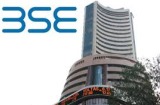
Bombay Stock Exchange (BSE), is the first ever stock exchange in Asia established in 1875. It is also the first Stock Exchange in the country to be granted permanent recognition under the Securities Contract Regulation Act, 1956.
Over the past 137 years, BSE has facilitated the growth of the Indian corporate sector by providing it an efficient capital-raising platform. Now, popularly known as BSE, the bourse was actually established as "The Native Share & Stock Brokers' Association" on 9th July 1875. The first venue of the earliest stock broker meetings in the 1850s was held under banyan trees - in front of the Town Hall, where Horniman Circle is now situated. A decade later, the brokers moved their venue to another set of foliage, this time under banyan trees at the junction of Meadows Street and what is now called Mahatma Gandhi Road (MG Road). As the number of brokers increased, they had to shift from place to place before they found a permanent place which they could, call their own. This place is now known or called as Dalal Street.
More than 5000 companies are listed on BSE making it world's No. 1 exchange in terms of listed members. The companies listed on BSE Ltd command a total market capitalization of USD 1.32 Trillion as of January 2013. It is also one of the world’s leading exchanges (3rd largest in December 2012) for Index options trading (Source: World Federation of Exchanges).
BSE is the first exchange in India and second in the world to obtain an ISO 9001:2000 certification. It is also the first Exchange in the country and second in the world to receive Information Security Management System Standard BS 7799-2-2002 certification for its On-Line trading System (BOLT). It operates one of the most respected capital market educational institutes in the country (the BSE Institute Ltd.). BSE also provides depository services through its Central Depository Services Ltd. (CDSL) arm.
BSE’s popular equity index - the S&P BSE SENSEX - is India's most widely tracked stock market benchmark index. It is traded internationally on the EUREX as well as leading exchanges of the BRCS nations (Brazil, Russia, China and South Africa).
Tools and Calculators
- Become A Crorepati Calculator
- SIP Calculator
- Retirement Planning
- Asset Allocation
- Home Loan EMI
- Personal Loan EMI
- Car Loan EMI
- Education Loan EMI
- PPF Calculator
- Employees PF
- Goal Setting
- Composite Financial Goal
- Children Education
- Networth
- Compounding
- Spending Less
- Future Value
- Human Life Value
- Lumpsum Target
- Lumpsum


